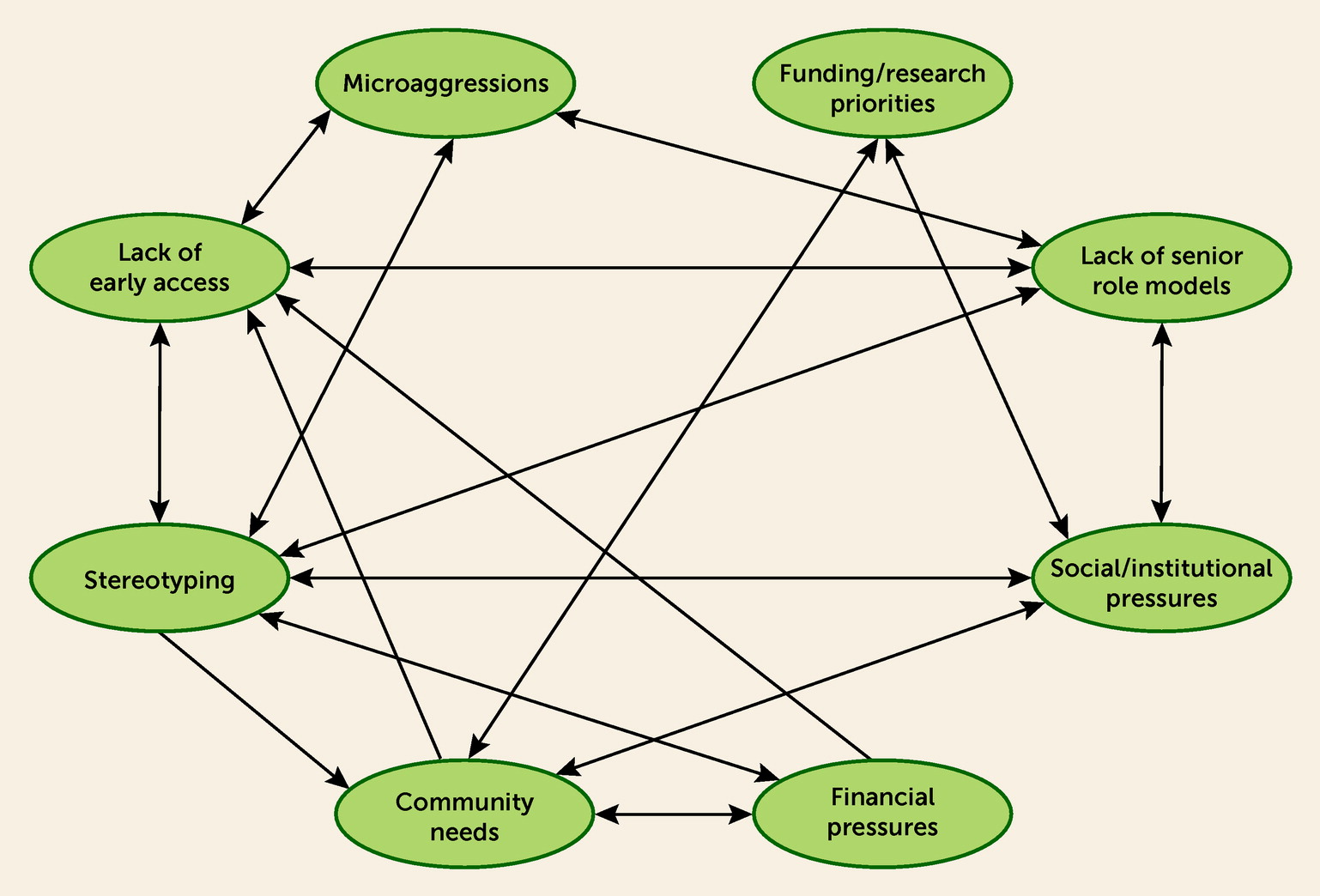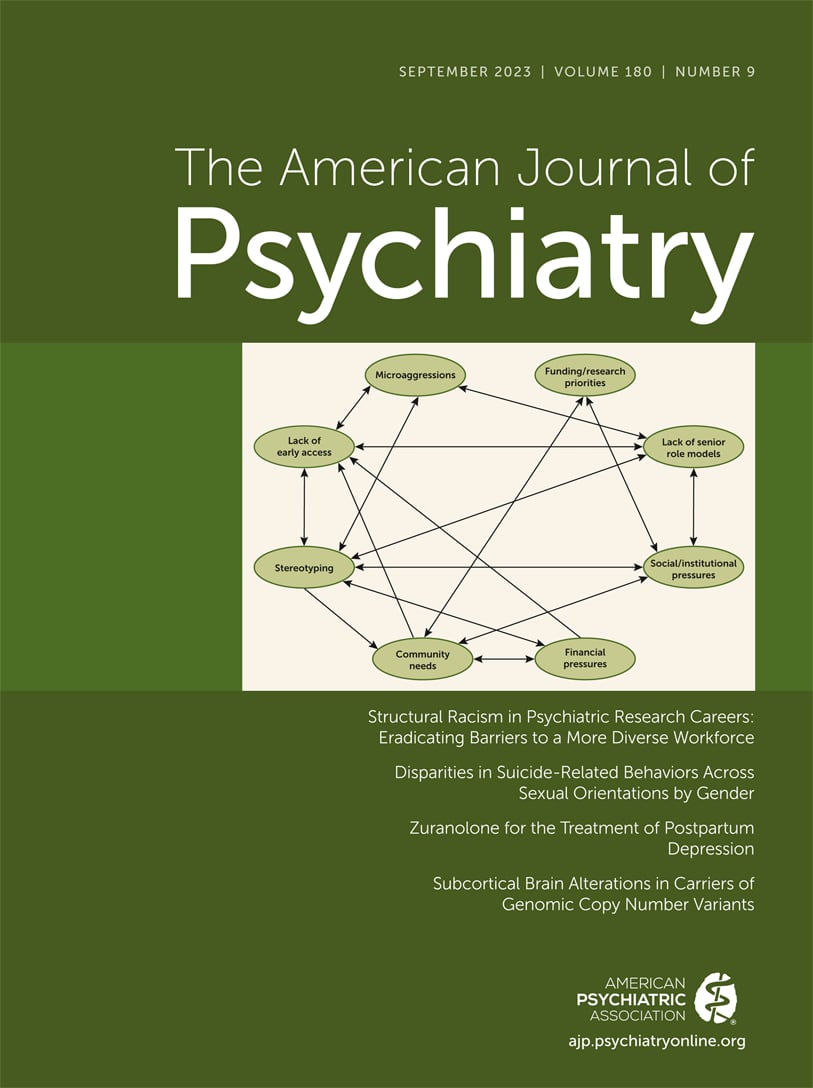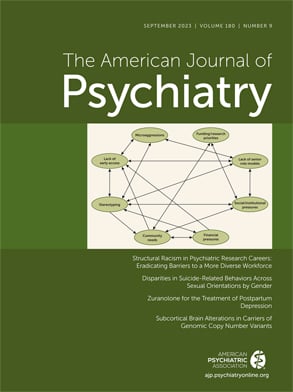BOX 2. Major research funding programs and initiatives
Building Infrastructure Leading to Diversity (BUILD) initiative: An NIH-funded initiative providing grants to undergraduate institutions to study innovative approaches to engaging and retaining students from diverse backgrounds in biomedical research. BUILD institutions must predominantly serve a minoritized population and have a relatively low level of NIH funding for biomedical research. The program partners these primary institutions with high-tier research-intensive institutions to create training opportunities.
Enhancing Neuroscience Diversity Through Undergraduate Research Education Experiences (ENDURE): NIH-funded initiative that provides individuals typically underrepresented in the field with training at the undergraduate level, so that they are prepared to enter and successfully complete neuroscience Ph.D. programs.
Faculty Institutional Recruitment for Sustainable Transformation (FIRST): Funded by the NIH Common Fund, the program aims to enhance and maintain cultures of inclusive excellence in the biomedical research community by facilitating institutions in their building a self-reinforcing community of scientists through recruitment of a critical mass of early-career faculty who have a demonstrated commitment to inclusive excellence.
Maximizing Access to Research Careers (MARC): A research training program supported by an NIH award to host institutions that grant baccalaureate degrees and are research intensive. MARC provides stipends, tuition and fees, and training-related expenses to support the transition of a diverse pool of undergraduate students to biomedical, research-focused higher degree programs.
Medical Scientist Training Programs: Dual-degree (M.D.-Ph.D. or D.O.-Ph.D.) programs offered by some medical schools and designed to streamline the student’s educational experience for fulfillment of both clinical and research doctoral degrees.
Meyerhoff Scholars Program: A program at the University of Maryland–Baltimore County that aims to increase diversity among future leaders in science, technology, engineering, and mathematics. This award is open to prospective undergraduate students of all backgrounds who plan to pursue doctoral studies in the sciences or engineering and who are interested in the advancement of minorities in those fields.
National Research Mentoring Network (NRMN): NRMN provides researchers across all career stages in the biomedical, behavioral, clinical, and social sciences with evidence-based mentorship and professional development programming that emphasizes the benefits and challenges of diversity, inclusivity, and culture. Common NRMN activities include intensive grant writing and peer mentoring programs.
NIH Loan Repayment Program (LRP): Established by Congress and designed to recruit and retain highly qualified health professionals into biomedical or biobehavioral research careers, the LRP repays up to $50,000 annually of a researcher's qualified educational debt in return for a commitment to engage in NIH mission-relevant research. To qualify for an LRP award, a person must be employed to conduct research at an institution for at least 20 hours per week.
National Science Foundation Research Experience for Undergraduates (REU): Small groups of undergraduates work in the research programs of the host institution at REU sites. Each student is associated with a specific research project and works closely with the faculty and other researchers. Students are granted stipends and, in many cases, assistance with housing and travel.
NIH Research Supplements to Promote Diversity in Health-Related Research: This funding mechanism is commonly referred to as a “Diversity Supplement.” Different subprograms within this larger initiative provide support for research experiences for individuals from diverse backgrounds throughout the continuum from high school to the faculty level. Funding is tied to and augments the original budget of a major research project award—hence the term “supplement.” The supplemental funding supports the participation of a specific named scholar in that research project, usually a scholar who can gain critical skills or exposure from participation.
Research Core (Facilities) and Clinical-Translational Science Institutes: Specialized laboratories or research facilities designed to offer various specialized services, training, equipment, consultation, and other types of resources to support researchers in an academic community. They are typically established with federal grant funding, managed by individuals with scientific expertise and experience, and are sustained through user fees and partnership with home institutions. They generally require substantial institutional investment, for example, from endowment, tuition, or overhead income.
UNITE Initiative: A trans-NIH initiative reporting directly to senior NIH leadership, focused on eliminating and reversing structural racism throughout the biomedical research process. Sub-initiatives include increasing support for health disparities research and research serving minoritized populations, increasing equity in research training and in the Intramural Research Program, and increasing the availability of data on minoritized researchers through existing NIH dashboard/outcomes systems. (UNITE is not an acronym.)


